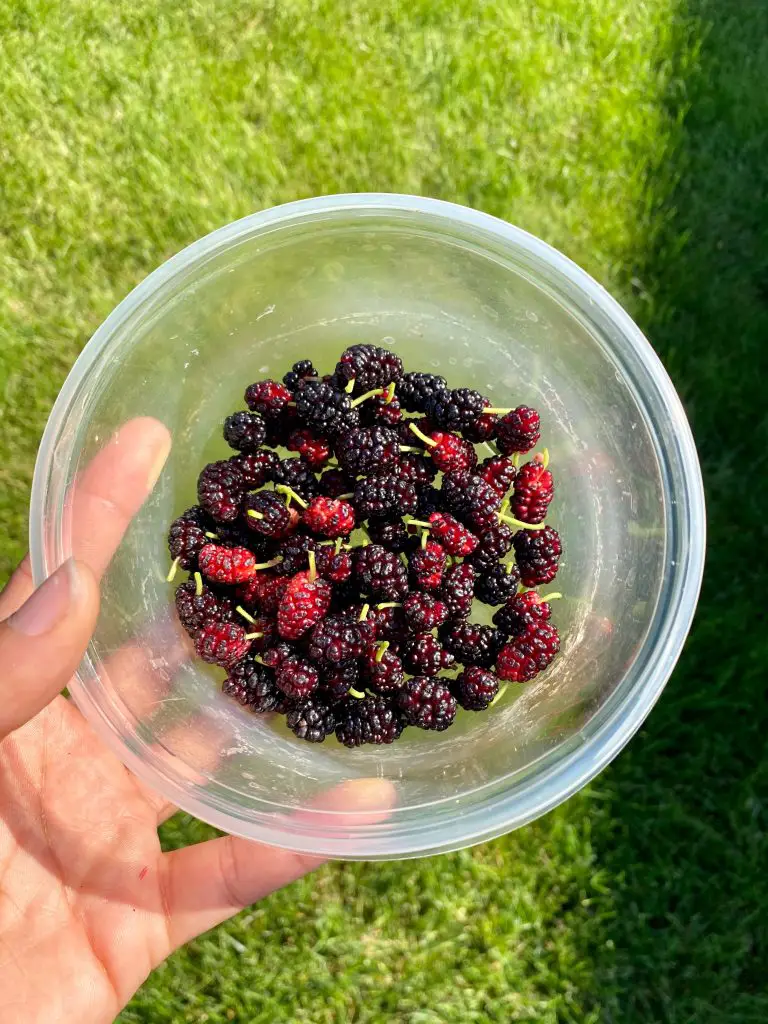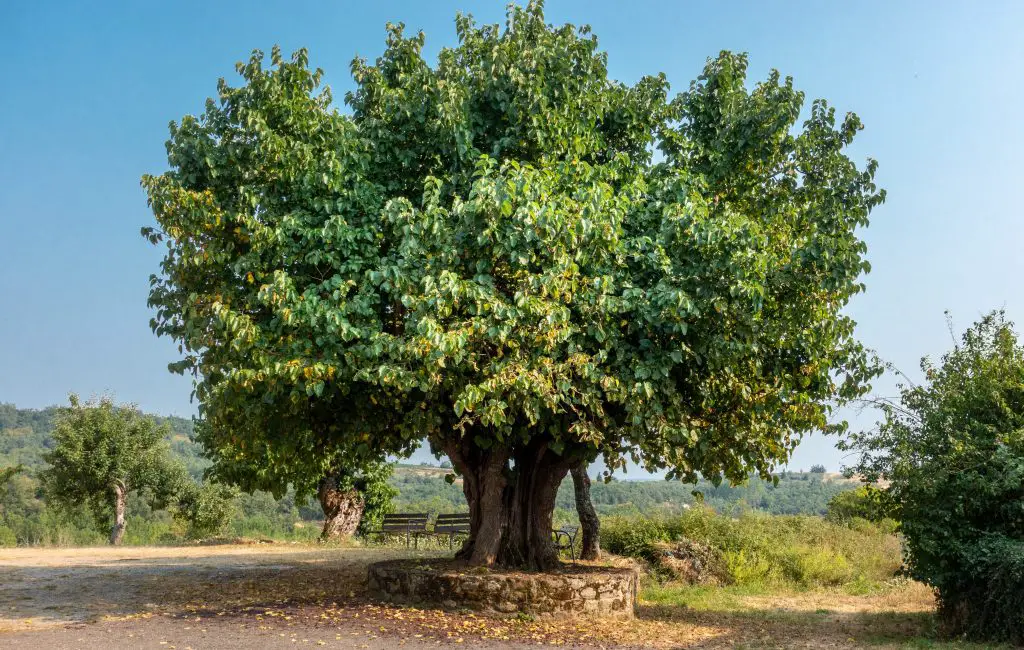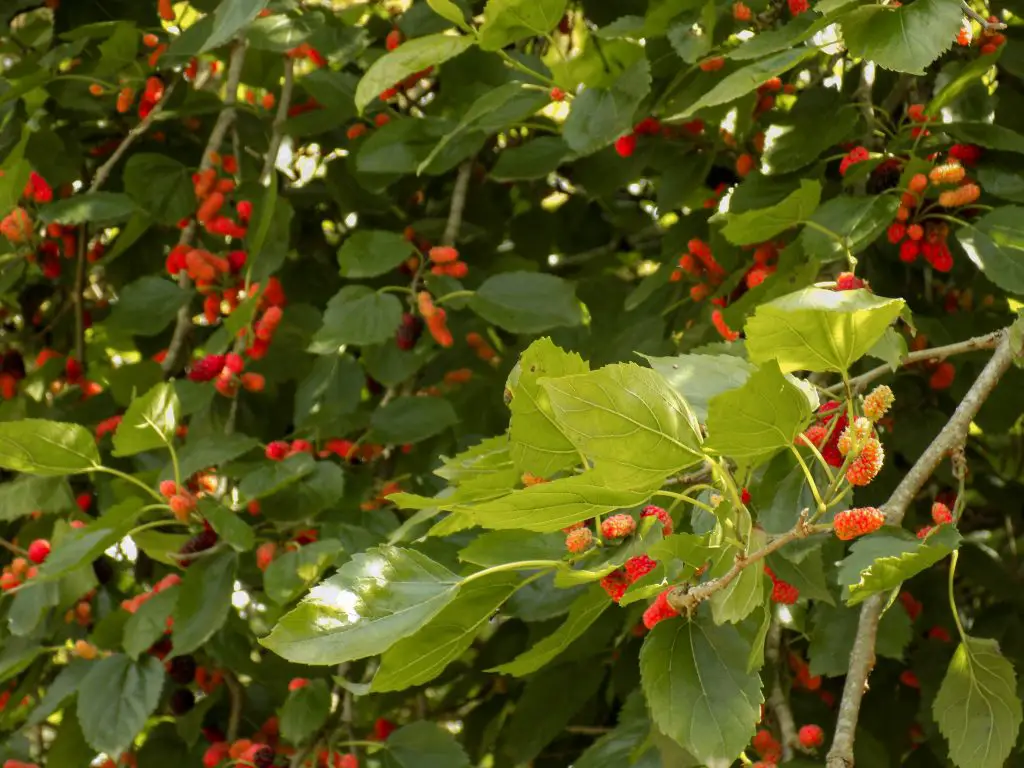Can You Eat Mulberries? Are They Safe? If you are lucky enough to have a mulberry tree in your yard you may not be certain whether you can eat the fruit. Even though Mulberries are a popular tree in various parts of the world, but to their uncommonness in places like the united states, many people do not know whether or not they are safe to eat.
Mulberries (Morus rubra) are quite safe to eat, though they can cause an allergic reaction in some people. While Mulberries are not commonly eaten in the United States they are one of the most important fruit crops in China. Mulberries are also popular in Europe and Turkey with the berries being used to make a range of jams, jellies, sauces, and desserts.
Mulberries are berries that were originally found in Europe, but they are now found in North America, Africa, and Asia. Mulberries are an ideal food to supplement your diet due to the fact that they are low in fat, low in carbohydrates, and they are high in fiber. You can use them in a variety of different ways including cooking them into a dish or you can just simply eat them. Mulberries have many health benefits in regards to their taste, nutrition, and vitamin content.

What Are The Health Benefits Of Mulberries Compared To Other Berries?
Mulberries are generally healthy and have grown in popularity due to their many benefits. Mulberries are one of the best sources of Vitamin C. They contain no cholesterol, sodium, or saturated fats and they are almost completely sugar-free.
They are rich in micronutrients and antioxidants. They can maintain healthy blood sugar levels, promote healthy cell growth and development, promote a healthy immune system, and protect the body from oxidative damage.
Mulberries compared with blueberries are more nutritious than blueberries in terms of calories per weight and vitamins. Both are high in Vitamin C and antioxidants. Blueberries are much better in Vitamin A than black mulberries. There is pretty much no difference between the two in terms of major minerals.
When comparing mulberries to raspberries the nutrition values are almost identical, including having the same amounts of fiber. Though Mulberries have more sugar, protein, and fatty acid, while raspberries have more Vitamin C, calcium, and iron.

How Does The Flavor of Mulberries Compare To Other Berries?
While Mulberries are most similar in appearance to blackberries that are no way near as sweet. They are somewhat tart in flavor and they have a vegetable-like character. They can be eaten raw but most often have sugar added to them to sweeten them or alternatively they are mixed with other berries which are sweeter.
However, as mulberries generally do not last that long after picking they are most commonly used in cooking and preserving. Mulberries are normally ripe in August and September and need to be used almost immediately.
How To Gather And Harvest Mulberries?
While Mulberries are can be handpicked this can be extremely slow and time-consuming, particularly when the tree is large and relatively mature. The quickest and simplest way to gather fruit is to spread blankets or sheets around the base of the tree.
You can either pick the sheets or blankets up at the end of the day as the mulberry will naturally drop fruit over several weeks. The alternative method is to shake the tree to knock loose the fruit. However, this method will yield ripe as well as underripe fruit, which are still of value as they can be used for baking.
To maximize your harvest it is important to deter birds from feeding on the mulberries as they ripen. As mulberries can get quite large netting is often not an option as such it is better to use visual deterrents such as tinsel or other eye-catching elements tied to the branches such as CD’s.

Storing The Mulberry Harvest?
As Mulberries are extremely soft and delicate they should be eaten immediately or preserved for later use. The berries can be preserved in a number of ways, including canning, freezing or the berries can be made into jams or sauces. If you are short on time when the fruit is ripe a simple and easy way is to freeze the berries until you are ready to make something.
When freezing mulberries start by inspecting the mulberries closely and then throwing away any that are damaged or underripe. Rinse them under cold water in a colander while gently stirring them with your fingers.
Once the berries have been washed spread them out on a baking tray covered in a sheet of baking paper place them into a freezer. Wait until the berries are frozen solid and place them into a resealable freezer bag and store them in the freezer until you need them.
How To Care For A Mature Mulberry Tree?
Mulberries are generally vigorous plants that are easy to grow. They will pretty much grow in most regions except the tropics and below zone 3. They perform at their best when they are grown in moist and fertile soils.
Like the majority of most fruit trees, they generally do better if they are planted in a location where there is plenty of nutrients. To ensure that this is the case it is best to add additional compost to the soil and also a handful of fertilizer such as palletized chick manure or blood and bone.
To ensure that the plant remains upright it is advisable to stake the tree in the first year or two to ensure that it is not damaged by wind and storms. As the tree’s root system will take some time to establish it is important to water it regularly in the first season or two.
A mulberry tree will typically take 3 years or so to start to produce fruit though the volume of fruit at the stage will generally be relatively small. You can expect good fruit production after 5 to 7 years.
It is important to note that when selecting a location it is best to choose an area that is not next to a walkway or path as the fruit drop that occurs in autumn will stain concrete pathways.
Once the plant has become established it is best to prune it every winter to ensure that the size of the tree remains manageable. If left up pruned the tree can easily reach 20 to 40 ft. When pruning it is important to ensure that any diseased or damaged branches are removed.
It is also advisable to remove any branches that are crossing each other and beginning to rub. This is important as rubbing of branches can create an entry point for disease to get into the plant and cause problems.
Once the pruning is complete it is also advisable to provide the tree with a feed of palletized manure or slow-release fertilizer to ensure that there are plenty of nutrients available for the upcoming growing season.
Relevant Articles
Blueberries Vs Raspberries: What Is The Difference?
7 Easy Steps To Creating An Orchard In Your Own Yard
How To Make Strawberry Plants Produce More Fruit? (5 Academically Proven Strategies)
What Are The Easiest Berries To Grow?
